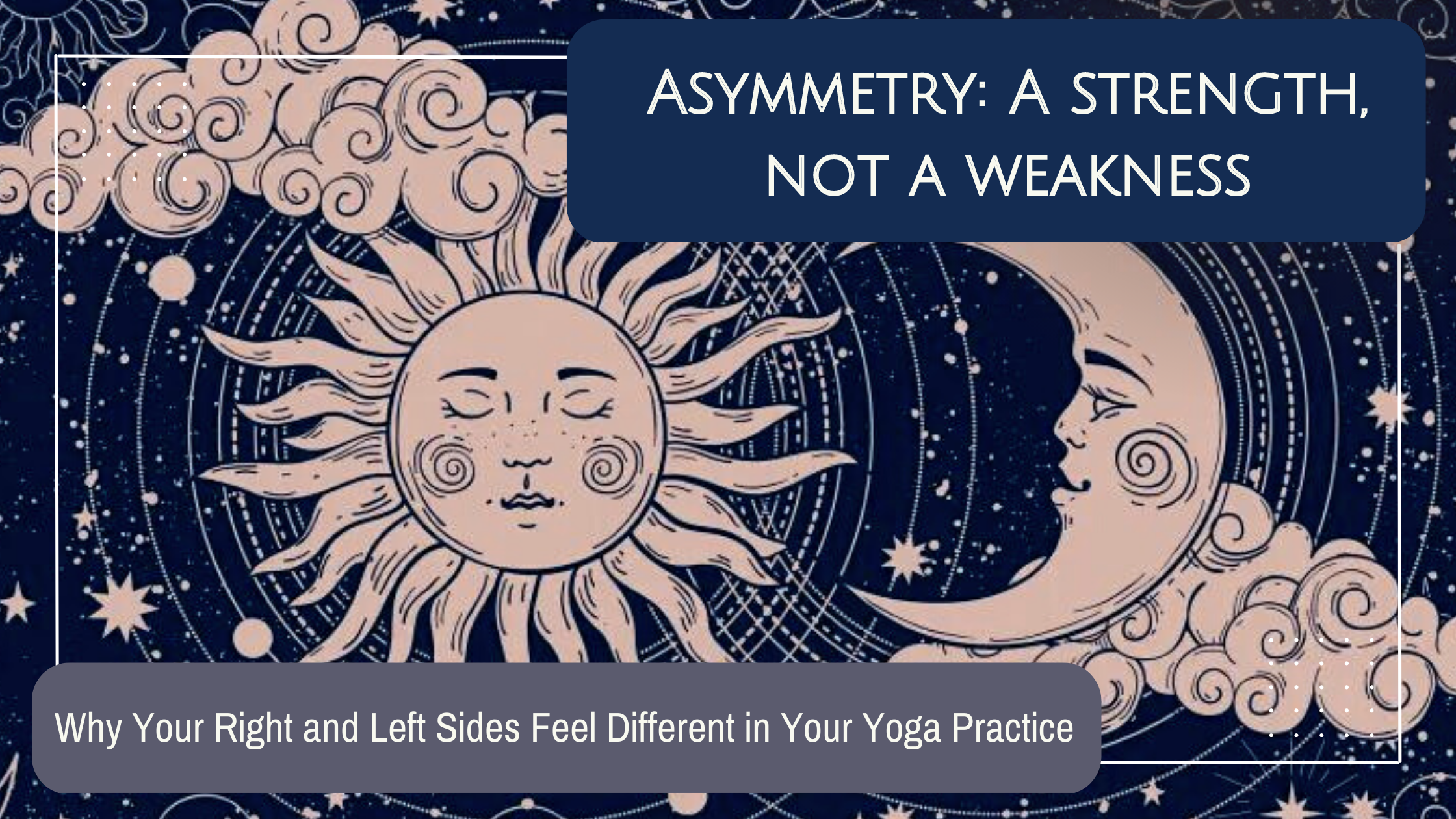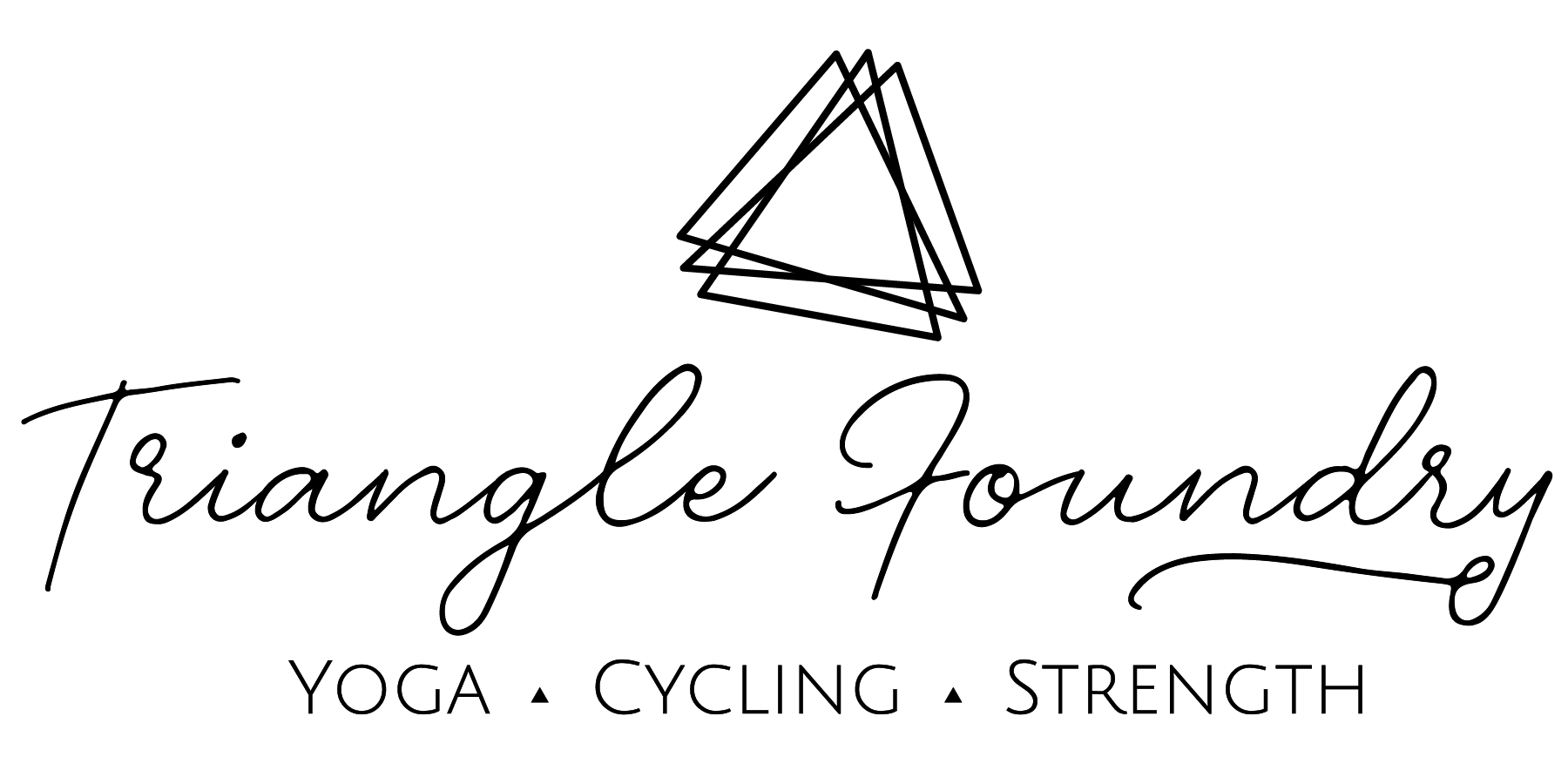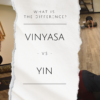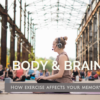Try some of our many yoga classes to see what works best for you!
Why Your Right and Left Sides Feel Different in Your Yoga Practice

Asymmetry: A Strength, Not a Weakness
“Your hand opens and closes and opens and closes. If it were always a fist or always stretched open, you would be paralyzed. Your deepest presence is in every small contracting and expanding, the two as beautifully balanced and coordinated as bird wings.” ~ Rumi
You step onto your mat, begin your yoga asana practice, and think “Woah! My left side is so different from my right today.” or “Ooh, I can’t quite stretch on this side like I just did on the other.”
Sound familiar?
Good news! The differences in the left and right sides of the body are completely normal, and there are many reasons why this could be.
Balancing the Masculine and Feminine Energies
First, for clarification, what is meant by masculine and feminine energy doesn’t quite have to do with male and female as it does with qualities that are found in nature and our energetic body.
Second, you may have noticed that the instructor typically begins poses on the right side of the body. This isn’t just simply to remember which side we’re on when guiding the practice, but rather, because it has to do with so much more.
Right Side Qualities:
- Masculine
- Sun
- Begins at the Sacral Chakra - located just below the navel. Controls creativity, drive and sexual energy.
Left Side Qualities:
- Feminine
- Moon
- Begins at the Root Chakra - located at the base of the spine. Controls identity, safety and security.
Beginning on the right helps to fuel up your fire and strength. Then, ending on the left helps to find your balance and cool. Overall, this aids to your prana flow, or life force, to be aligned.
Anatomical and Physical
In addition to starting with the right and ending on the left being important for energy alignment, it also has to do with the movement of your organs.
Twisting:
- Twisting poses can massage the internal organs, helping for proper stimulation and digestion in your system. When you twist to the right first, it activates your ascending colon. Then, when twisting to the left, your descending colon is stimulated. This keeps things moving in a counterclockwise direction allowing for proper excretion through the channels.
Rolling on to Right Side After Savasana:
- You’ve just finished savasana and the instructor may guide you to roll to your right side before closing. The reason for this is because it can allow for proper pranayama, or breath, to end your practice. When you roll to your right side, your left nostril will be more open and have a calming effect (remember, left side = feminine). If you were to roll to your left and breathe primarily through the right nostril (male), it could bring about energy and activate your sympathetic nervous system. In addition, rolling to your right makes space for your heart to rest above your organs and release pressure. Since a primary focus in the asana practice is to open the heart through poses, pranayama and intention, not placing pressure on your heart at the end of practice can keep from counteracting all the work you just did to open it.
Poses
Interestingly enough, everyone is asymmetrical on the inside:
- The right lung is made up of three lobs.
- The left lung is made up of two and is smaller in size than the right.
- The heart sits to the left of center.
- The large liver sits to the right.
- Because of the above two, the diaphragm’s right side sits higher and the left side lower!
Muscle imbalances are also completely regular because your body is adapting to the activities you do, especially depending on if you’re primarily right or left handed. In addition, 90% of people have a leg-length discrepancy, though the actual measurement varies. Your body will inevitably grow stronger in the areas you place focus and emphasis on weight and usage.
Even in the world around us, nature is full of asymmetry: Warmth and cold, growth and death, light and dark, etc. Why would we consider ourselves in this beautiful existence to be any different? Or worse, judge ourselves harshly for being so?
This is an invitation to notice when you’re judging yourself or your body for its imbalances, especially in asana practice. Bring awareness to that judgment and shift your focus. Let it be an opportunity to stay aware and in tune to your needs. It is here that you can begin to see how your asymmetries are a gift.
Stand in your power, root to rise, and feel the balance within and around you.






